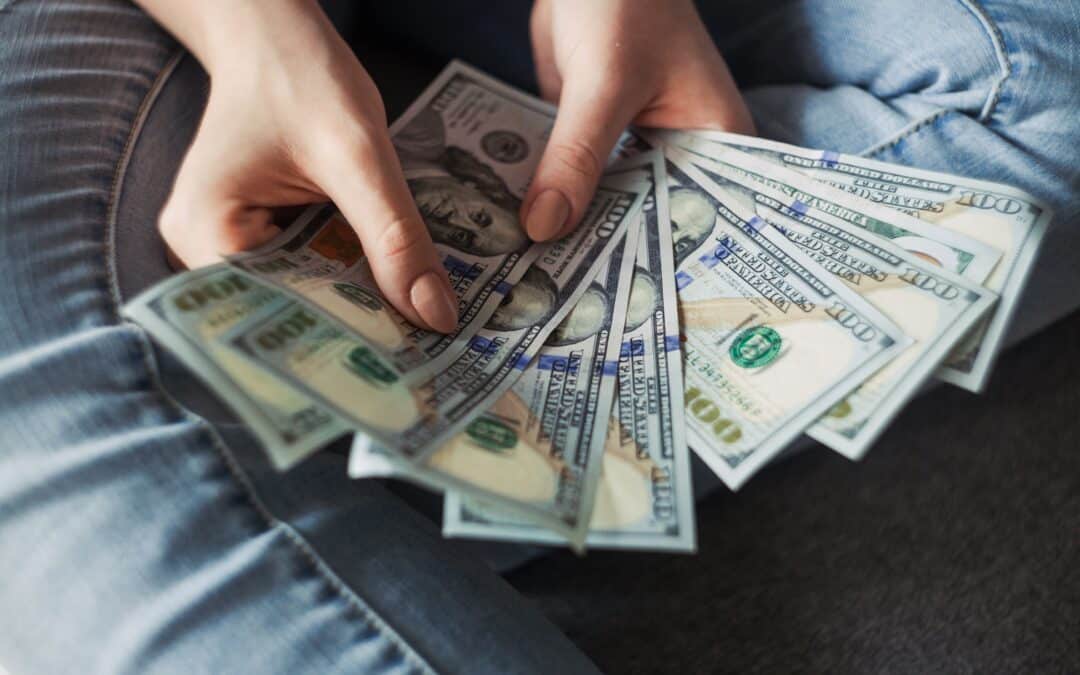Have you ever wondered how much money you need to day trade? If you’re new to the game, this question is probably on your mind. Unfortunately, there isn’t a simple answer. It all depends on a number of factors, including your trading strategy and risk tolerance. However, we can give you some general guidelines to help you get started. So read on to find out how much money you need to day trade.
Decide How Much You Can Afford to Lose
You don’t need as much money as you think to start day trading – in fact, you can get started with just a few hundred dollars. Day trading has a reputation for being a playground of the rich and famous, but that doesn’t mean it’s out of reach if you don’t have thousands of dollars to fling around. Believe it or not, you can start day trading with just a few hundred bucks! It may sound like peanuts compared to what some investors are working with, but hey, peanuts are essentially trees… so you already have access to an entire forest worth of money! Before you know it, those same peanuts could turn into big acorns and, with some luck, even a money tree.
To determine how much money you need to start day trading, it’s important first to understand the potential risks and rewards of the activity. Day trading involves buying and selling securities within the same day, often multiple times, in an attempt to capitalize on short-term price movements. This can be risky, as the rapid changes in market conditions can quickly eat into your capital. However, with careful planning and a disciplined approach, day trading can also offer the potential for significant profits.
Decide What You Want to Day Trade and What Your Strategy Is
Day trading seems complicated and mysterious for most aspiring traders – almost like alchemy. But if you have the stomach for it, there are a few secrets to success. One of the first secrets is understanding how much money you need to set aside for your trading endeavors. That amount is closely linked to the stock market’s current conditions and the type of trader you choose. For example, if you’re looking for short-term profits, you may not need as large an initial investment as someone with a longer-term strategy. The bottom line is that when it comes to day trading, researching investment needs according to your strategy can spell the difference between joy and disappointment.
One of the key factors determining how much money you need to start day trading is the type of securities you plan to trade. For example, if you plan to trade stocks, you will need to have enough capital to cover the cost of buying and selling shares. This will typically require a minimum of several thousand dollars, as most stocks trade for at least $5 per share. If you plan to trade options, on the other hand, you will need to have enough capital to cover the cost of the option premiums, as well as any potential losses if the options expire worthless.
Another factor to consider is the type of trading strategy you plan to use. If you plan to trade on margin, for example, you will need to have enough capital to cover the margin requirements set by your broker. This typically ranges from 50% to 100% of the value of the securities you are trading, sometimes more, depending on the broker and the type of securities you are trading.
Day Trading Is a Business
Day trading can be like a business. You need to have a plan, research the market, and be disciplined to be successful. In addition to the capital required to cover the cost of your trades, you will also need to have enough money to cover your living expenses while you are day trading. This is especially important if you plan to day trade as your primary source of income. You will need to have enough money to cover your rent or mortgage, food, utilities, and other expenses for at least several months until you can establish a consistent income from your trading.
Start Small – Size Does Matter
If you’re getting your feet wet with day trading, treat it like a party: Start small and work your way up. Otherwise, you might find yourself out of your depth in no time! Increasing your investment is much more manageable than cutting back after making too large a commitment. While it may be tempting to measure the success of your investments against those around you, nothing can replace research and knowledge when it comes to investing. After all, slow and steady wins the race!
How Much Money Do You Need to Day Trade?
Deciding how much money to invest in day trading is a balancing act, like an acrobat on a high wire. You want enough to capitalize on your opportunities and weather any bumps that could arise with the markets. But you don’t want so much that your expectations are out of line – overly ambitious goals can lead to unhinged decision-making, leaving you more stressed than when you started!
At the end of the day, deciding how much money to allocate for day trading comes down to making sure your risk-reward ratio works in concert. That way, whether or not the markets decide to play nice or go awry, you won’t find yourself spinning off into a downward spiral of ruin!
Paper Trade
You don’t need a live account with a brokerage to start your journey to learn how to day trade. Paper trading, trading with fake money, is a very responsible option. Paper trading is a great way to learn how stocks move and how to enter and exit your trades without risking any of your hard-earned money. It doesn’t provide any immediate profits, which makes it unattractive. But, if you consider you can’t lose any money while learning with this approach, it becomes quite sexy.
Defined Amounts to Day Trade
If you’re still hell-bent on trading with real money, then most online brokerages, such as TD Ameritrade and E*TRADE, will allow you to open a cash account with a $500 deposit. If you’re looking to short stocks, you will need a margin account, which requires a $2,000 deposit. Margin accounts are also subject to the Pattern Day Trader Rule (PDT). Cash accounts are not subject to PDT, but you cannot short stocks. You can buy put options for large-cap stocks, which is the same as shorting but with a defined risk.
Example of Buying Stocks
When you buy put options, you profit from the downside on the underlying stock while only risking the amount of your investment. This is similar to buying stocks, where your worst-case scenario is you lose your investment. For example, you buy 100 shares of XYZ at $5.00. $5.00 x $100 = $500 investment. So the worst case is you lose $500 if the stock goes to $0. The same goes for put options. This differs from shorting stocks because you could lose more than your investment by shorting stocks. You can learn more about the risks of shorting stocks here.
Real Day Trading Requires a Large Account
Day trading requires a large amount of money to freely trade without restriction by PDT, $25,000 or more. This can be a large amount of money for most people, so weighing all the risks and rewards before deciding if day trading is right for you is important. More money means more risk. Many new traders are likely starting with less than $25,000. So, actual day trading may be very difficult for them.
Bottom Line
So how much money do you need to day trade? It depends on your goals and objectives! If you want to make a quick buck, you don’t need as much money as you think. But if you want to become a full-time day trader, you will need more capital. Most importantly, you start small and gradually increase your investment as you gain experience and confidence. Remember, there are risks involved with day trading – but if you’re careful and research, you can make a lot of money.
Ready to get started? Take this free course today!

